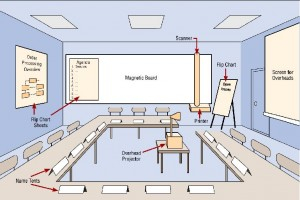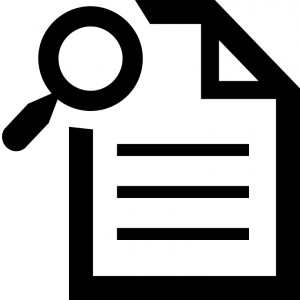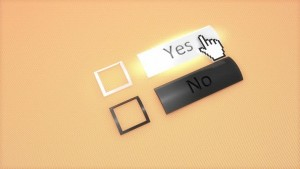
 Data Structure
Data Structure Networking
Networking RDBMS
RDBMS Operating System
Operating System Java
Java MS Excel
MS Excel iOS
iOS HTML
HTML CSS
CSS Android
Android Python
Python C Programming
C Programming C++
C++ C#
C# MongoDB
MongoDB MySQL
MySQL Javascript
Javascript PHP
PHP
- Selected Reading
- UPSC IAS Exams Notes
- Developer's Best Practices
- Questions and Answers
- Effective Resume Writing
- HR Interview Questions
- Computer Glossary
- Who is Who
Techniques for Requirements Gathering
In the business environment, it is required to have an effective way of market research to understand what a customer wants and how to be successful over competitors. We need to focus on how to make the users to achieve their goals. The Requirements gathering process will help in understanding the needs of a customer, especially in the IT industry.
There are several different requirement gathering techniques that can be used. Several tools and techniques are used by the stakeholders and business analyst to facilitate this process and capture the exact and detailed requirements. The Requirements gathering techniques should help in breaking down Requirements and Gathering into digestible steps thereby providing instructions to complete each step.
Let us take a look at some of the requirements gathering techniques. Some commonly used methods include:
- Interviews
- Questionnaires
- Observations
- Facilitated Workshops
- Focus groups
- JAD
- Brainstorming
- Prototyping
- Documentation analysis
Interviews

Interviews are of primary ways for information gathering where the system analyst will have face-to-face interaction with relevant stakeholders or subject matter experts. The business analyst will spend most of the time to interview system users and system owner during the early stages of project life cycle.
It is important to be very clearly articulate of the objectives of interviews and the questions could be prepared ahead of time or asked spontaneously and the responses should be recorded. Interviews could also be done with multiple interviewers and / or multiple interviewers. Interviews could be either one on one or group interviews.
Types of Interviews
There are two types of interviews namely unstructured interviews and structured interviews.
Unstructured Interviews
These involve a conversation by the interviewee asking general questions. It is usually inefficient technique as it has a tendency to go off track from the main goal and the analyst will have to redirect the interview in the right path.
Structured Interviews
The interviewer will be the one making specific questions in order to obtain the required information from the interviewee. This type of interview is considered to be efficient.
Semi-structured interviews
It begins with focused questions and moves to open-ended discussion. The data of interest will have to be predetermined. Some of the questions that need to be asked are mentioned below.
- How should a task be performed?
- Why is this task being performed?
- Under what conditions, this task should be performed?
- What information do you need to complete the task
- Whom should the communication be sent to?
Questionnaires
It is an informal technique in which a document is used to collect information and opinion from respondents. It allows the system analyst to collect information from a target population which is very large and in remote locations or those who will have only minor input into the overall requirements. The responses could be sent for further statistical analysis if needed. It makes clear and specific questions and involves some closed questions with a range of answers.
Format for Questionnaires
Free format
Free format questionnaires will allow users to answer freely for each question. A question is asked and the respondent records the answer in the space provided after the question. An example of free format questions is “Are there any problems with the current functionality? If yes, please explain”
Fixed format
Fixed-format questionnaires contains questions that require a selection of predefined responses from individuals. Respondents need to select an answer from a set of answers given. An answer from this format is much easier to analyze. But, on the other hand, it is more static; respondents cannot give their opinion or answers other than provided.
Observations
Observation or job shadowing involves an analyst watching their client performing their daily tasks and asking questions about what they are doing and why. It is a great way to understand what the user might go through in their job and can provide some immediate requirements for how a process can be improved.
Types of Observation
Passive/Invisible
Here the analyst does not interact with the worker at all while the observation is going on, but takes notes. The analyst can ask questions by using a prepared list of questions of the worker on completion of the entire process, but they are not to interrupt the person while they work. Some jobs are too hectic or dangerous for the worker to be constantly stopped and questioned. In those cases passive observation works the best.
Active/Visible
Here the analyst can interrupt the worker to ask questions during the observation session. Some questions to ask include:
- “Why are you doing this at this point?”
- “What is usually the next step?”
Facilitated Workshops

Facilitated Workshops bring a larger group on a common platform to discuss and reach agreements. They help to define cross-functional requirements for a product in a faster manner than if you were to interview each of them separately. A successful facilitated session requires planning. The facilitator will need to consider a common meeting location, the session duration, how consensus will be achieved and the agenda.
Focus Groups

Focus groups involve synergistic discussion among people who are representative of the users or customers related to the expectations, features and other aspects of a product. A feedback will be collected about needs / opportunities / problems to identify requirements.
The discussion is facilitated by a trained moderator. The participants will be selected and their roles, topics to be discussed and logistics will be prepared for the focus group and a group report records about what was learned will be made.
Joint Application development (JAD)

It is a technique where a workshop is facilitated and the entire system participants sit and discuss for the system analysis and defining requirements. The discussion continues until the session objectives are completed and complete set of requirements is documented and agreed to.
It has been used to obtain and gather information from the group about the problems, objectives and system requirements. During the session, they sit together to discuss and get the ideas from the participants.
Brainstorming

It involves self-generated contribution of ideas by the group members around a specific issue, problem or requirement. The appropriate subject matter experts will start creatively brainstorming about what the solution might look like. The ideas gathered from the group members will be prioritized depending on the ones they think are the best for this solution. The resulting consensus of best ideas is used for the initial requirements.
The objective of brainstorming in a group is to reduce social suppression among group members and stimulate fresh ideas generation leading to an increase the overall creativity of the group.
Prototyping

In this approach, the preliminary requirements will be gathered which is used to build an initial version of the solution called a prototype. The prototype may not have all the functionality but serves as a proof of concept for idea verification/further analysis. An iterative process of prototype creation, testing and feedback is followed before reaching a final stage.
This repetitive process continues until the product meets the final goal of business for an agreed number of iterations.
Documentation Analysis

The technique involves written documentation of procedures and tasks that often exist, particularly in business contexts. It describes how things should be done rather than how they are. This also helps the Business Analyst to prepare questions for validating the requirement correctness and completeness. Most of the information is mostly buried in present documents that assist us in putting questions as a part of validating the requirement completeness.
The core of system analysis is to get as much as information needed to develop the system. Hence it is in our hands in deciding which techniques will best do the job in the time and with the resources available. During the requirement gathering, the analyst will identify what types of techniques will be used and what type of information will collected.



